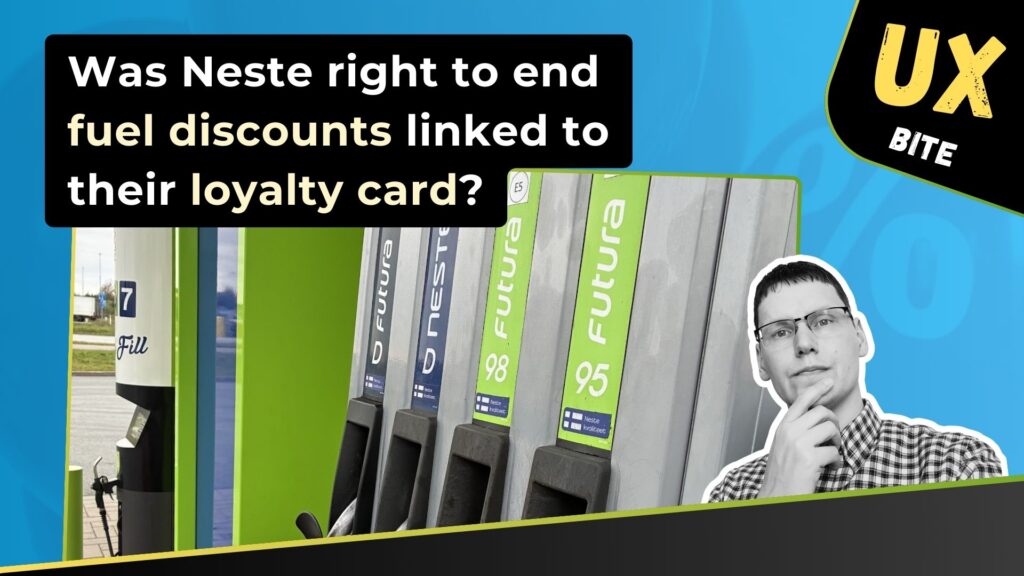
Neste’s new strategy has sparked an interesting discussion about the necessity of loyalty cards and programs. Did Neste make the right call? If a client has shown up, does it already signify loyalty?
Let’s look at this question together through the lens of user experience and service design.
1. What changed?
Neste ended loyalty card discounts and instead lowered the fuel price for everyone.
2. What is the purpose of a loyalty card?
In marketing communication and service design, the goal of a loyalty card is to make the customer feel that their loyalty is valued. At the same time, it drives customer behavior in ways that benefit the company. And naturally, the more a customer consumes, the more they contribute to business results.
3. Does the customer even want a loyalty card?
Would you? Probably not? From the customer’s perspective, signing up for a loyalty card is usually a hassle, an effort that’s only worthwhile if the reward or savings are attractive enough. Convenience matters too: is the loyalty program tied to an national ID card, is it a separate card, or a virtual card in an app?
4. What does the customer actually want?
The customer want to feel like she or he got a good deal. And “deal” here doesn’t always mean financial gain – it’s also about feeling treated fairly and well. For the effort they put in (arriving at the station, understanding pricing, paying, etc.), they want a smooth, hassle-free experience.
5. Is it worth offering a loyalty card?
A loyalty card shouldn’t exist just for the sake of having one. What matters is designing a thoughtful loyalty strategy with a long-term view. And this shouldn’t be done behind closed doors – real customers should be involved in shaping the program.
If the only benefit of the card is the same flat discount every time, it rarely feels like a genuine loyalty program. Instead, it feels like a burden: something mandatory to carry around and a source of unfairness if you end up paying full price because you forgot the card at home.
6. What makes a good loyalty program?
The hallmark of a good loyalty program is personalization. It should reflect customer behavior and needs. For example, a customer who buys more fuel should clearly get more rewards. That way, behavior and benefits are logically connected.
Surprising the customer positively – like offering a discount on their birthday – also helps create a more personal connection.
If there’s no real personalization, then simply rewarding the customer for showing up might be the most honest strategy.
7. Has Neste made the right decision?
It looks like Neste’s strategy of treating all customers equally – with no discrimination – has given them a win in terms of brand image.
The customer experience is now much simpler. There’s no need to sign up for or carry around a loyalty card. And pricing is straightforward: the price you see on the price tower is the real price.
From a business results perspective, the long-term outcome will also depend on competitors’ strategies.
How do you like Neste’s strategy and what do you think about it?

